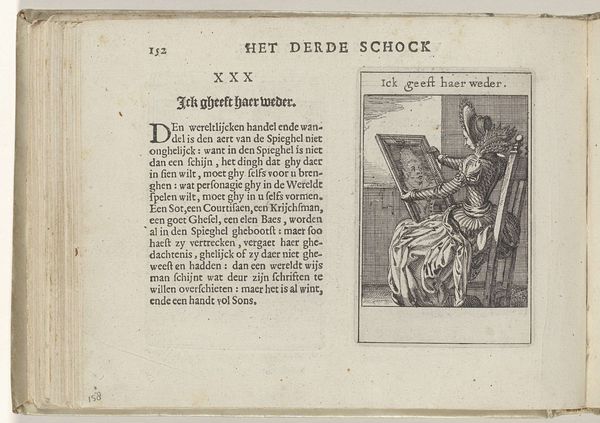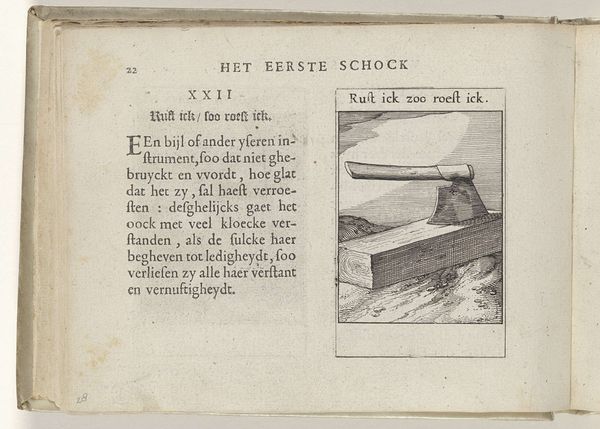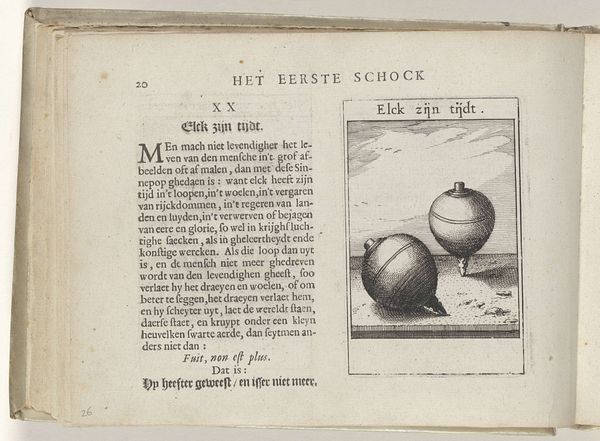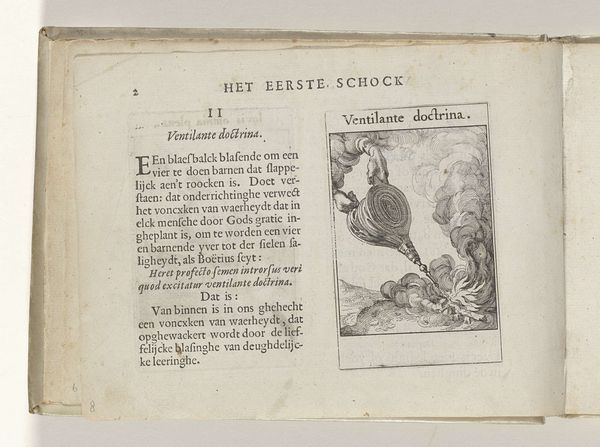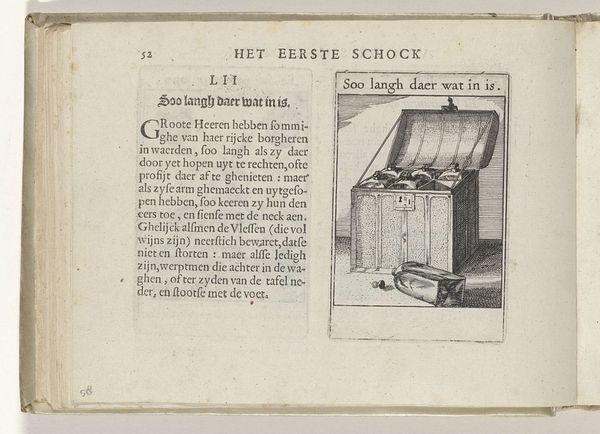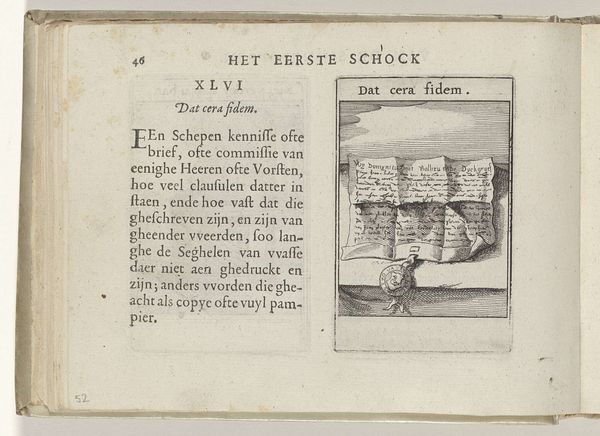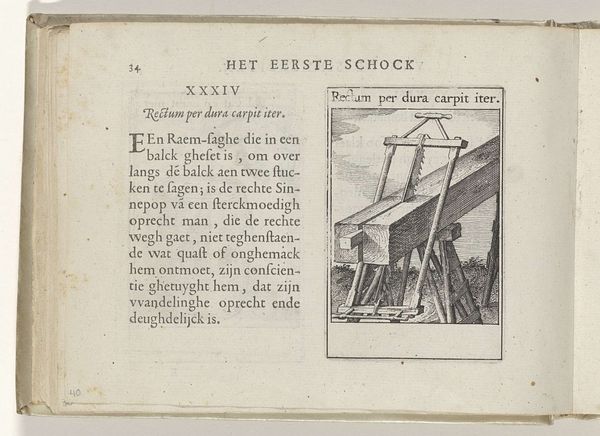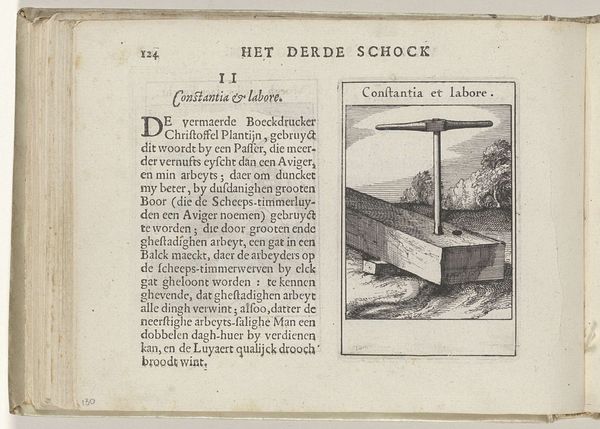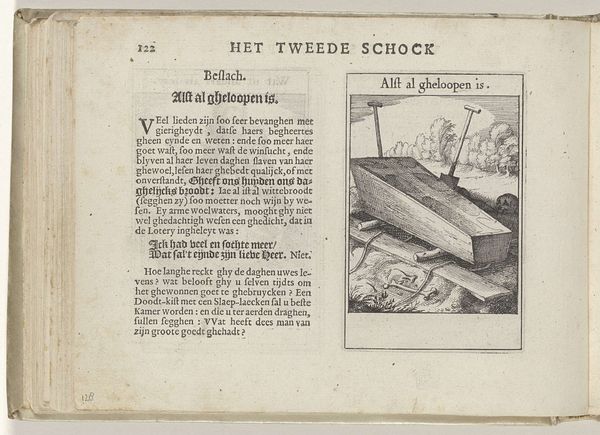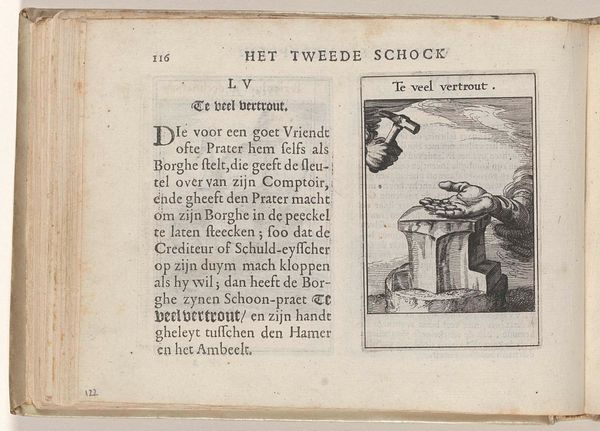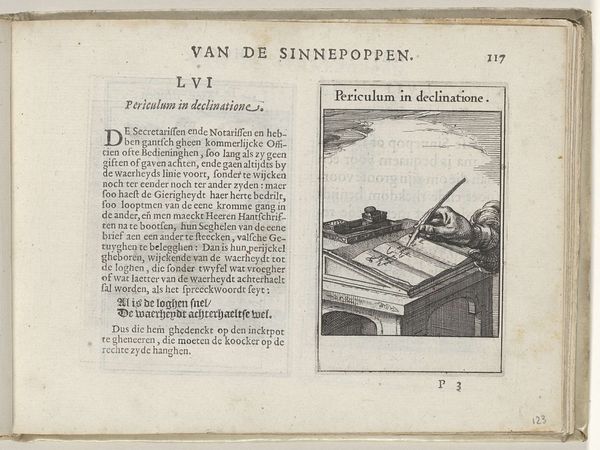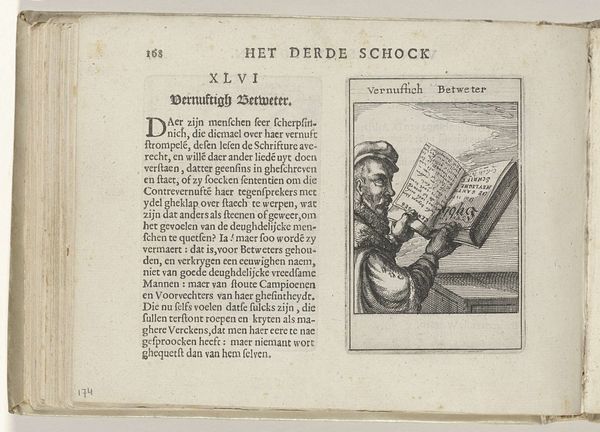
drawing, print, paper, ink, engraving
#
drawing
# print
#
landscape
#
paper
#
11_renaissance
#
ink
#
northern-renaissance
#
engraving
Dimensions: height 137 mm, width 188 mm, height 95 mm, width 60 mm
Copyright: Rijks Museum: Open Domain
Curator: We are looking at a rather intriguing engraving today titled "XXXVI Licht en dicht," dating back to 1614. It is attributed to Roemer Visscher. Editor: My first impression? The composition strikes me as intentionally stark, almost austere. The sharp geometric forms contrast with the airy, allegorical figure on the left. Curator: The work exemplifies the Northern Renaissance fascination with intricate detail executed through line and texture. Look at how the engraver contrasts areas of high detail—the latticework on the window—with zones of smooth shading, thus giving depth. It’s all about balancing contrasts and creating visual interest with minimal elements. Editor: Beyond the purely formal considerations, I’m struck by the obvious use of symbolism related to sight and perception, specifically a contrast of light and shadow and a windhead symbolic of worldly affairs. Is this image perhaps an allusion to sight within enclosure versus vision cast outward? The sun illuminates a grotesque face of the wind outside, the darkness remains inside, blocked by window frames. It speaks of a protected space versus forces to which one might become exposed. Curator: An astute reading. Considering the context, with Visscher operating in the intellectual milieu of the Dutch Renaissance, it’s likely that this image is, as you suggest, allegorical in intent. However, beyond any symbolic meaning, it's undeniable that the organization of graphic elements functions in an interesting structural manner to reinforce a dialectic relationship, with text as mirror of the opposing images. Editor: These visual dynamics speak across time and cultures, though the intent behind a historical symbol cannot always be ascertained so readily. One thing stands out here and across eras is the universal symbolic vocabulary found within images. Curator: A fitting thought to bring our brief analysis to a close. This exercise allows us to see both the structured logic and the symbolic reach that make an artwork resonate through the ages.
Comments
No comments
Be the first to comment and join the conversation on the ultimate creative platform.
